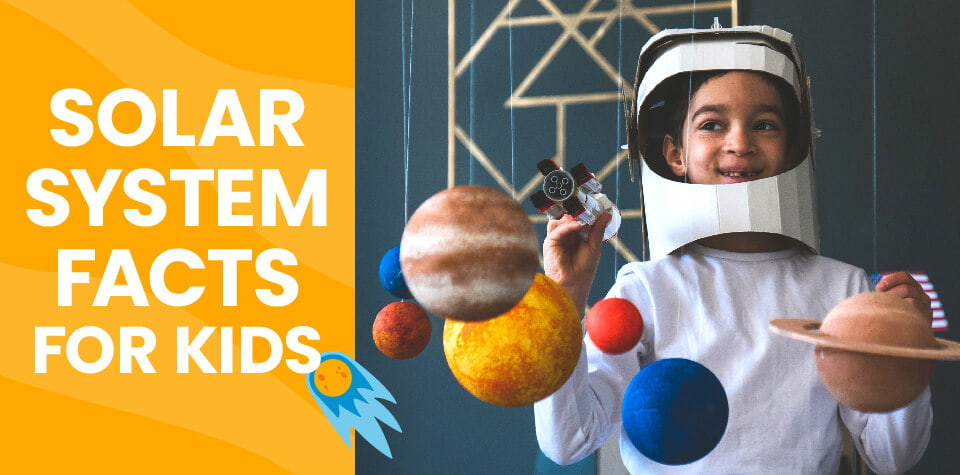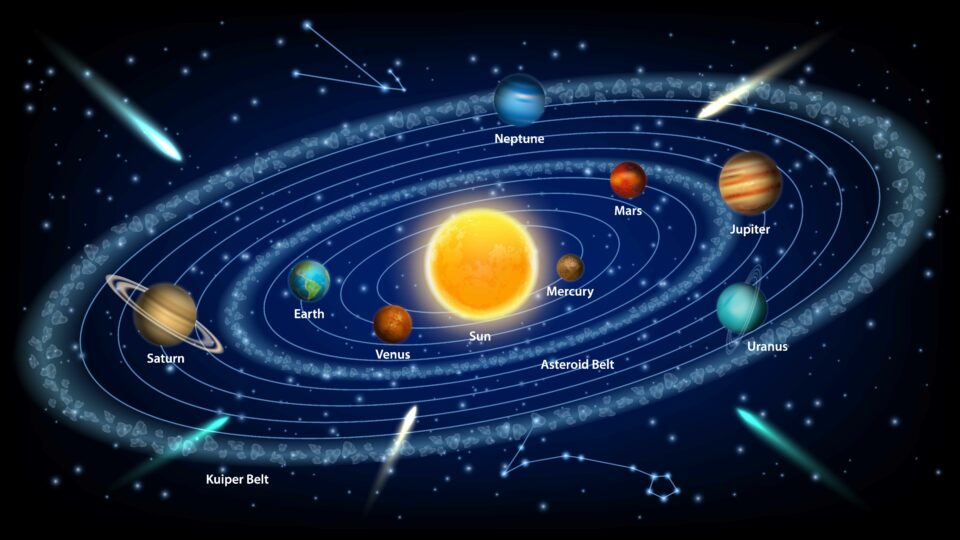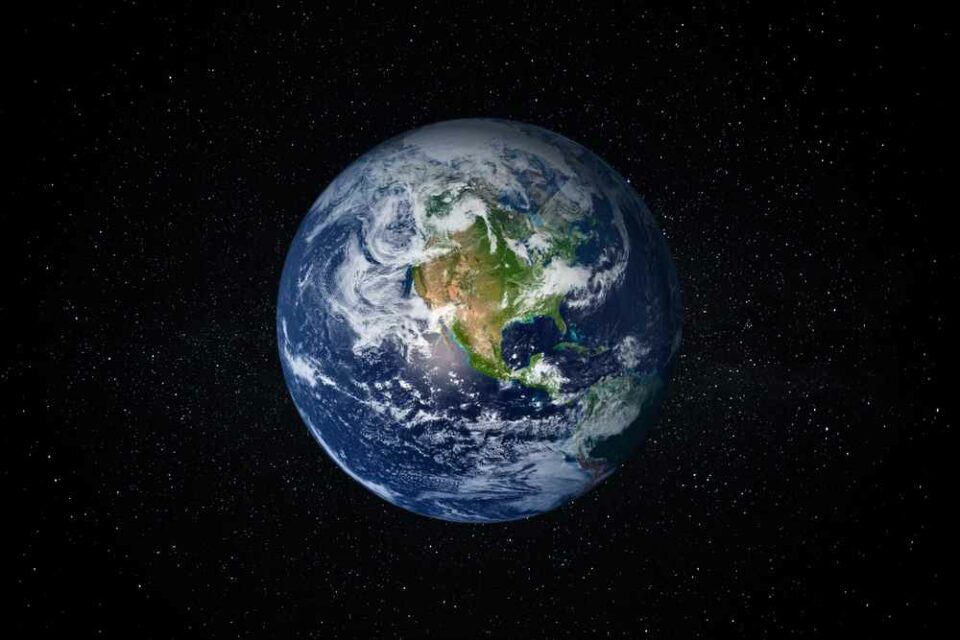
Out of This World! Mind-Blowing Facts about the Solar System
Kids often dream of becoming astronauts who visit stars and galaxies thousands of light-years away. But you can help plan adventures in space for kids that will keep them closer to home. Earth is part of a vast solar system that offers enough exploration opportunities to last a lifetime.
With so much to uncover, your young space explorer may not know where to blast off to first. Start their journey of discovery by introducing them to our cosmic neighbors through these amazing facts about the solar system for kids.
A Map to the Planets
The best way for your outer space voyager to understand our place in the night sky is to look at how the stars and planets are laid out and where our solar system fits within the bigger framework of the Milky Way galaxy.
Our solar system is home to eight planets that revolve around a central star, the Sun. Each planet travels around the Sun on a path called an orbit. It takes some planets longer than others to complete a trip, so every planet’s year is a different length. Earth’s planetary year is 365 days (and six hours) because it takes us that long to orbit the Sun completely.
The space between the planets is mostly empty, but an asteroid belt separates the four planets closest to the Sun (Mercury, Venus, Earth, and Mars) from the rest of our solar system’s planets (Jupiter, Saturn, Uranus, and Neptune). Beyond Neptune sits a massive ring of objects called the Kuiper Belt. That’s where you’ll find Pluto, which astronomers refer to as a dwarf planet.
The Center of Attention – The Sun
The Sun makes energy in the form of heat and light thanks to an ongoing nuclear reaction at the star’s core. This is the energy that makes life on Earth possible. As our Sun runs out of fuel for the reaction energy, it will gradually become a red giant—a bigger, brighter, colder version of itself. But don’t worry—astronomers expect the Sun to burn for another five billion years or more.
The Speedster – Mercury
After Pluto got demoted to a dwarf planet, Mercury took the title of smallest planet in the solar system. Mercury also makes the fastest trips around the Sun, with a planetary year of just 88 days. That means a 10-year-old Earthling would be 41 years old on Mercury! Wonder why this planet looks a little banged up? It’s constantly pelted by meteors, which shoot like rockets through the thin atmosphere to smash into the ground, forming craters.
The Toxic One – Venus
Venus is the second closest planet to the Sun, and it’s named after the Greek goddess of love. But don’t be fooled by the sweet name—this planet is anything but loving. If a human tried standing on Venus, the pressure from its searing hot, dense atmosphere of toxic clouds would crush them within seconds.
The Home – Earth
Affectionately known to some as the Third Rock from the Sun, Earth contains the only known life in the universe—including us! It also moves more than you might think standing on its surface. It spins at a rate of one thousand miles per hour at the Equator. Think that’s fast? Our home planet travels around the Sun at a speed of 67,000 miles per hour (107,826.5 kilometers per hour). Talk about speedy!
The Soggy One – Mars
Mars is cold and dry now, but scientists think the Red Planet was once covered in rivers and oceans. Its thin atmosphere causes most of the planet’s surface water to evaporate quickly into space, but sheets of ice the size of California loom beneath the rock and at the poles.
The Mess in the Middle – Asteroid Belt
Mars and Jupiter are separated by a debris field containing between one and two million asteroids, each at least half a mile in diameter. Mountain-climbing astronauts might be especially interested in visiting Ceres, the dwarf planet located here since it’s home to a four-mile-tall mountain in the shape of a pyramid.
The Big One – Jupiter
Jupiter is the largest planet in our solar system. This giant weighs twice as much as all the other planets combined. Clouds of gas decorate it in colorful stripes, and a swirling storm system that’s 10,000 miles (approximately 16,100 kilometers) wide forms its famous Great Red Spot, discovered in 1831 by amateur astronomer Samuel Heinrich Schwabe.
The Fancy One – Saturn
Saturn is dolled up with seven rings made of water-ice and rock. Astronomers aren’t sure what created the rings, but they’re a lot bigger than what you’d wear on your finger—the ring system is 30 feet (approximately nine meters) thick and 170 miles (approximately 274 kilometers) across. Some people think Jupiter’s gravitational pull captured asteroids and other small celestial bodies and flung them off to orbit around neighboring Saturn, where the planet’s powerful gravity ripped them into small pieces.
The Oddball – Uranus
For a planet, Uranus is a bit of an odd duck. Uranus rotates east to west instead of the west-to-east rotation Earthlings are used to, and its equator is positioned at a nearly perfect right angle to its orbit. If the same were true for Earth, North America and all the other continents would be turned on their sides. Astronomers think Uranus was knocked sideways billions of years ago when a celestial body twice the size of Earth crashed into it.
The Farthest of Them All – Neptune
Neptune, the most remote planet from the Sun, was the first celestial body that astronomers didn’t discover with their eyes. Instead, French astronomer Alexis Bouvard predicted that Neptune existed based on his studies of Uranus’s orbit. Joseph Le Verrier and John Couch Adams used math to confirm Bouvard’s prediction in 1845, and astronomer Johann Gottfried Galle finally laid eyes on it with a telescope one year later.
What’s Left Behind – The Kuiper Belt
Past Neptune, you’ll find a massive donut-shaped asteroid belt called the Kuiper Belt. It stretches more than 30 times farther into space than the distance between Earth and the Sun. NASA’s astronomers estimate the belt contains more than a trillion comets and hundreds of thousands of “smaller” objects (if you consider 60 miles in diameter small). This is where you’ll find Pluto and its recently discovered dwarf planet neighbors, Makemake, Haumea, and Eris.

There’s so much more to explore and multiple ways to do it. Try bringing learning into the real world by encouraging your junior space ranger to enjoy a hands-on solar system project for kids. Building a solar system model is a great way to bond with your child, and the interactive project will help them visualize the movements of the solar system and planets in a kid-friendly way.
Earth in the Spotlight – Bonus Facts About Our Home
Your child doesn’t have to blast off into space to learn about other planets—Earth is fascinating in its own right. Launch them on a voyage of discovery with these intriguing facts about the planet we call home:
- Earth is the fifth largest planet in our solar system.
- Earth is the only planet in the solar system where water currently exists, but only three percent is freshwater.
- Our planet’s Moon is a natural satellite formed by Earth’s collision with another small planetary body.
- The word Earth is of Germanic origin, but our planet’s name sounds quite different in other cultures. The Greeks referred to our world by the name Gaia (Mother Earth), and the ancient Egyptians referred to it as The House of Geb, the grandson of the Sun god Ra and brother to Nut, the sky goddess.

There’s No Place Like Home
Earth may not be the biggest or fastest planet in our solar system, but it’s a special place simply because it’s our home, and we share it with all of humanity. Think about it: billions of people, hundreds of cultures, thousands of languages, millions of species of animals and plants. Of all the planets in our solar system, no other is quite like Earth. And best of all, it’s the easiest for us to explore because we’re already here.
Is your budding astronaut interested in launching a galactic space program? Help them get started with these activity ideas for kids’ solar system exploration. Build a fleet of straw rocket ships together to blast off to the deepest reaches of space. Help them craft a constellation light to create starfields and practice navigation techniques. And every space program needs a mascot, so why not build one using this fun DIY Eagle activity?
Is your child starting to show an interest in STEM? Put them on a path of discovery with our Science Junior subscription box. It’s loaded with hands-on activities, stories, and puzzles that spark curiosity to keep children engaged and discovering the world.
